Introduction
The automotive industry is at a pivotal moment in its history. With increasing demand for electric vehicles (EVs), advancements in autonomous driving technology, and evolving consumer preferences, the 2025 model year promises to be one of the most exciting and transformative years for car buyers and enthusiasts alike. From major manufacturers to innovative newcomers, automakers are preparing to unveil new cars that could change the way we drive, travel, and think about transportation.
In this article, we will explore which car brands are expected to release groundbreaking models in 2025, focusing on the technologies, design features, and innovations that could define the next generation of vehicles. We will examine how these revolutionary new cars could impact the automotive landscape, the environment, and the consumer market.
1. The State of the Automotive Industry in 2025
Before delving into specific car models and brands, it’s essential to understand the broader trends and challenges that automakers are facing as we approach 2025.
A. The Rise of Electric Vehicles (EVs)
- EV Market Growth: The shift toward electric cars has accelerated in recent years. By 2025, the global market for electric vehicles is expected to expand significantly, driven by both consumer demand and government regulations aimed at reducing carbon emissions.
- Battery Technology and Range: Advancements in battery technology, including solid-state batteries, are improving the performance and range of EVs, making them more accessible to the mass market.
- Charging Infrastructure: The expansion of charging stations and faster charging technology will play a crucial role in the widespread adoption of electric vehicles.
B. Autonomous Driving and AI Integration
- Self-Driving Cars: While fully autonomous vehicles may not be ubiquitous by 2025, many car manufacturers are making strides toward Level 3 or Level 4 autonomous driving, where the car can take over most driving functions under certain conditions.
- AI and Driver Assistance Systems: Advanced driver-assistance systems (ADAS), powered by AI, are becoming more common in new cars, offering features like adaptive cruise control, lane-keeping assist, and emergency braking.
C. Sustainability and Environmental Regulations
- Government Mandates: Many countries, particularly in Europe and North America, are setting ambitious targets to phase out gasoline and diesel cars in favor of zero-emissions vehicles.
- Carbon Neutrality Goals: Automakers are aligning their production with carbon neutrality goals, reducing emissions not only from vehicles but also in the manufacturing process.
D. Consumer Preferences and Technological Expectations
- Connectivity and Infotainment: Consumers expect vehicles to offer seamless integration with smartphones and other devices, with advanced infotainment systems, voice controls, and AI-driven personalized experiences.
- Safety and Comfort: The demand for safety features, such as collision avoidance systems and advanced airbag technologies, continues to rise. Comfort features, including climate control, seating configurations, and ride quality, remain essential in the premium segment.
2. Major Automotive Brands Expected to Release Revolutionary Models in 2025
With the backdrop of these broader trends, several automakers are positioning themselves to unveil revolutionary new vehicles in 2025. These models promise to push the envelope in terms of performance, technology, and sustainability. Let’s take a look at some of the key players and the vehicles they plan to release.
A. Tesla: The Future of Electric Performance
- Tesla Cybertruck: Tesla’s long-awaited Cybertruck is expected to revolutionize the electric truck market with its futuristic design, rugged durability, and cutting-edge technology. This electric pickup will target consumers seeking both utility and performance in a fully electric package.
- Tesla Model 2: Tesla is rumored to be working on an affordable compact EV aimed at a broader audience. By 2025, this vehicle could change the landscape of the entry-level EV market, making electric cars more accessible to mainstream consumers.
- Autonomous Driving Enhancements: Tesla continues to push the boundaries of self-driving technology, and 2025 could bring even more sophisticated AI and driver-assistance systems, setting the stage for a more autonomous driving experience.
B. Rivian: Disrupting the Electric Truck Market
- Rivian R1T and R1S: Rivian, an electric vehicle startup, has made a big splash in the electric truck and SUV market with its R1T pickup and R1S SUV. By 2025, these vehicles will likely have received significant updates, including improvements to range, performance, and technology. Rivian’s focus on off-road capabilities and adventure-ready designs makes them a strong contender in the EV space.
- Expansion of the Product Line: Rivian’s potential release of additional models, such as an electric delivery van or a more affordable compact SUV, could help solidify its place in the market.
C. Ford: The Legacy of Innovation in EVs
- Ford Mustang Mach-E: The electric Mustang Mach-E has already made a significant impact on the market, but Ford will continue to refine and expand its offerings in 2025, possibly introducing new variants, including a high-performance model or an even more affordable version.
- Ford F-150 Lightning: The electric version of America’s best-selling truck, the F-150 Lightning, could see improvements in battery capacity, towing capabilities, and charging infrastructure, making it a dominant force in the electric truck segment.
- Collaborations and Expansion: Ford’s partnerships with tech companies and its commitment to electric vehicle production will likely yield new, innovative models, particularly in the areas of autonomous driving and connectivity.
D. Volkswagen: Driving the Future with ID Series
- Volkswagen ID.4 and ID. Buzz: Volkswagen’s electric ID lineup, including the ID.4 SUV and ID. Buzz electric van, represents the company’s bold move into the electric future. By 2025, these models will likely receive updates in terms of battery efficiency, range, and advanced features, possibly including more autonomous capabilities.
- Affordable EVs: Volkswagen’s focus on making electric cars accessible means that we may see new, lower-priced options in the ID lineup that target younger buyers and first-time EV owners.
E. BMW: The Future of Performance and Sustainability
- BMW iX and i4: BMW’s iX SUV and i4 sedan are part of the company’s push into the luxury electric market. In 2025, expect further refinement in terms of range, driving performance, and luxury features.
- BMW i Vision Circular: BMW’s commitment to sustainability could lead to groundbreaking innovations in vehicle materials and production methods. The i Vision Circular concept is an example of the company’s goal to create a fully recyclable electric vehicle.
- M Performance Electric Cars: BMW’s performance brand, M, could embrace electric powertrains by 2025, producing high-performance EVs that offer exhilarating driving experiences while maintaining efficiency.
F. Mercedes-Benz: Luxury Meets Electric Mobility
- Mercedes EQS and EQB: Mercedes-Benz is expanding its EQ electric lineup with the EQS luxury sedan and EQB compact SUV. In 2025, these vehicles will likely feature advancements in range, charging speed, and interior technology.
- Mercedes Vision EQXX: Mercedes’ Vision EQXX concept car could influence the design of production vehicles in the coming years, focusing on extreme efficiency and cutting-edge technology, such as a solar roof and AI-powered driving systems.
G. Lucid Motors: Luxury Electric Sedans
- Lucid Air: Lucid Motors is positioning itself as a competitor to Tesla in the luxury electric sedan market. The Lucid Air, which offers impressive range and advanced interior technology, will likely see new iterations in 2025 that build on its already strong foundation.
- Lucid Gravity SUV: The upcoming Lucid Gravity SUV could challenge other luxury electric SUVs, combining high performance with luxury features and sustainable materials.

3. Key Innovations to Expect in 2025
In addition to the groundbreaking vehicles, several innovations will shape the automotive landscape in 2025:
A. Advanced Battery Technologies
- Solid-State Batteries: These batteries promise to offer higher energy density, faster charging times, and greater safety compared to current lithium-ion batteries.
- Battery Recycling and Sustainability: With the growth of EVs, automakers are increasingly focused on developing systems to recycle and reuse battery materials, reducing environmental impact.
B. Autonomous Driving
- Level 3 and 4 Autonomous Vehicles: While fully autonomous vehicles may still be a few years away, 2025 could see a significant leap toward semi-autonomous driving, where vehicles can take over more driving tasks without human intervention.
- AI-Driven Driving Systems: Expect vehicles to feature more advanced AI systems that can predict traffic patterns, adjust driving styles, and optimize energy use.
C. Vehicle-to-Everything (V2X) Communication
- Connected Infrastructure: Cars in 2025 will likely be more connected to the world around them, interacting with infrastructure such as traffic lights, road signs, and even other vehicles. This could improve safety, reduce traffic congestion, and enhance the driving experience.
D. Sustainable Materials and Manufacturing
- Eco-Friendly Interiors: Automakers are increasingly turning to sustainable materials such as recycled plastics, vegan leather, and natural fibers for their vehicle interiors.
- Carbon Neutral Manufacturing: Several automakers are investing in carbon-neutral production processes, reducing the environmental footprint of manufacturing their cars.
4. Consumer Expectations for 2025 Models
As automakers continue to innovate, consumers are becoming more demanding in terms of what they expect from new vehicles:
A. Affordability and Accessibility
- The growing interest in electric vehicles will lead to increased demand for affordable EV options that are accessible to a wider range of consumers.
B. Enhanced User Experience
- Consumers expect cars to offer a seamless experience that integrates with their digital lives, from smart home connectivity to advanced infotainment systems.
C. Sustainability and Ethics
- As environmental concerns grow, consumers are increasingly looking for vehicles that are eco-friendly and produced ethically, with sustainable materials and processes.
Conclusion
The 2025 model year represents a turning point in the automotive industry, with groundbreaking vehicles that promise to transform the way we drive, live, and interact with technology. From electric vehicles to autonomous driving systems and sustainable manufacturing practices, the automotive industry is evolving at an unprecedented pace. Consumers can look forward to a wide array of revolutionary new cars that offer enhanced performance, safety, and sustainability.
As automakers continue to push the boundaries of innovation, the question remains: how will these new vehicles shape the future of transportation, and will they meet the evolving needs and desires of consumers? The 2025 model year promises to be an exciting chapter in the automotive world, with new cars that will define the future of mobility.



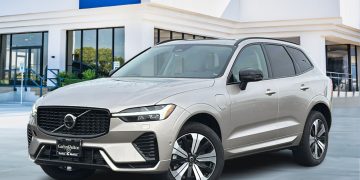


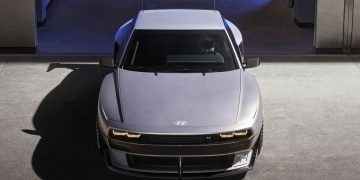


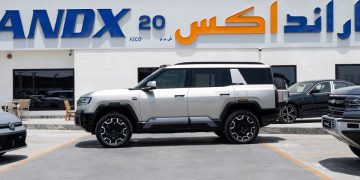

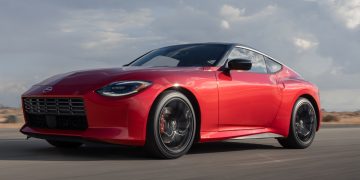

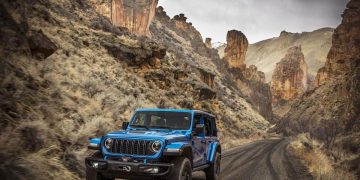




















Discussion about this post